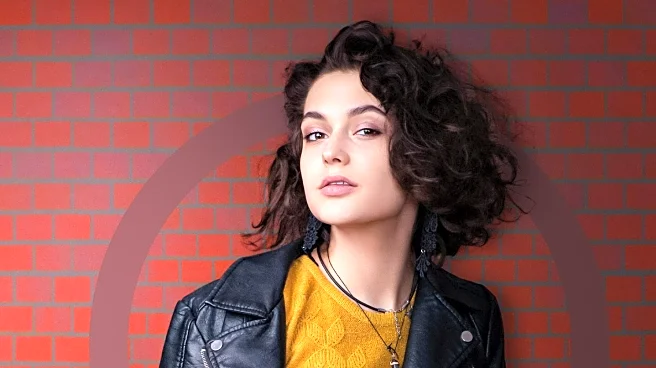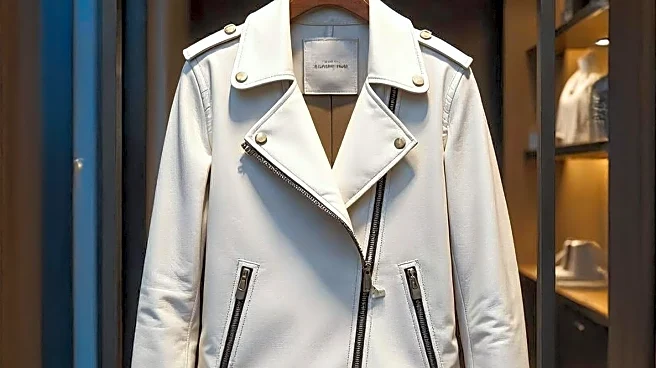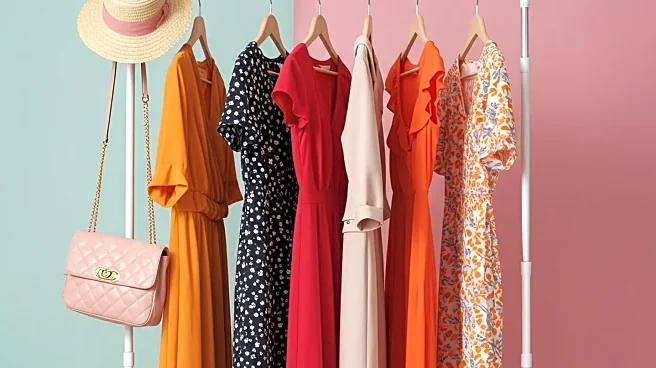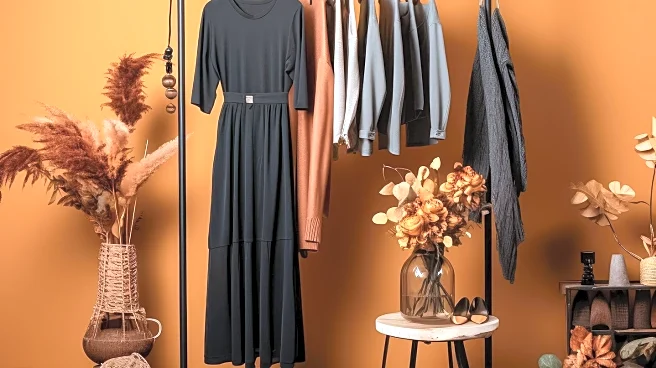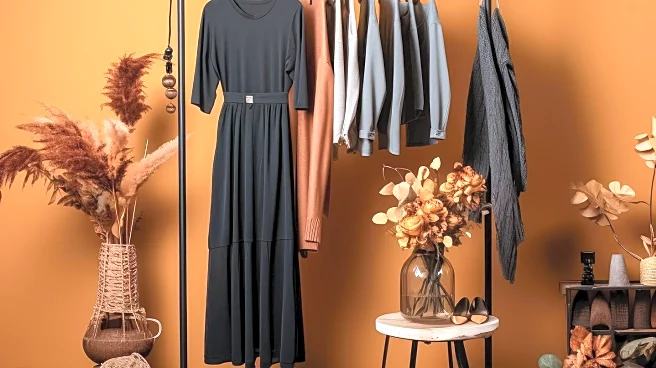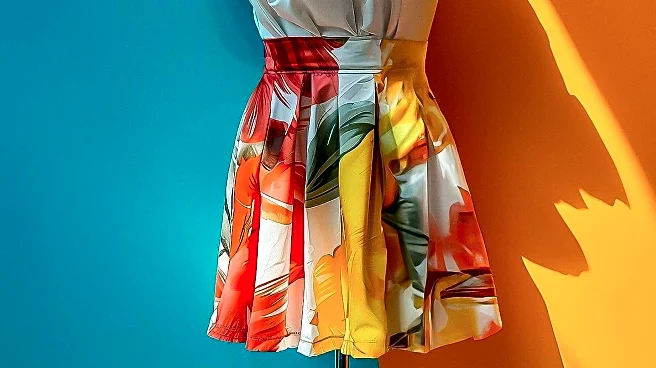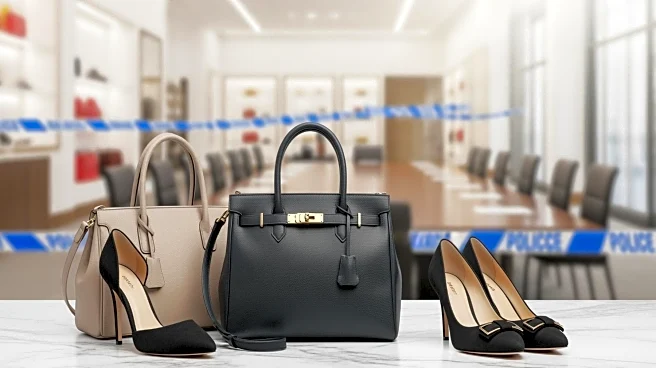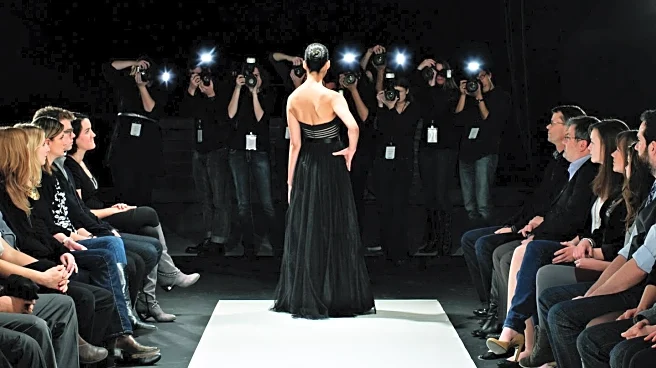What's Happening?
Fashion experts have curated a list of the best leather jackets for women in 2025, emphasizing style, quality, and versatility. Celebrity stylist Elana Solomon and stylist Lindsay Conkle provide insights
into selecting the perfect leather jacket, focusing on materials such as lambskin, sheepskin, cowhide, and goatskin. These materials offer varying degrees of softness, durability, and water resistance. The article highlights the importance of choosing a jacket with a relaxed fit for layering and a versatile hip-length style. Additionally, the guide explores different styles, including oversized, trench, and cropped jackets, and discusses the significance of color and finish in achieving a timeless look.
Why It's Important?
Leather jackets are a staple in women's fashion, offering a timeless appeal that transcends trends. The insights provided by fashion experts help consumers make informed decisions when investing in high-quality outerwear. By understanding the nuances of materials, fit, and style, shoppers can select jackets that not only enhance their wardrobe but also offer longevity and versatility. This guidance is particularly valuable as consumers seek durable and stylish options that align with their personal fashion preferences and lifestyle needs.
What's Next?
As the fashion industry continues to evolve, consumers can expect more innovative materials and designs in leather jackets. The growing popularity of vegan leather options, including plant-based alternatives, may lead to increased availability and variety. Fashion brands might also focus on sustainable practices, offering eco-friendly choices without compromising on style or quality. Shoppers should stay informed about emerging trends and materials to make the best choices for their wardrobe.
Beyond the Headlines
The leather jacket market reflects broader trends in fashion, including the shift towards sustainable and ethical production. As consumers become more conscious of environmental impacts, the demand for eco-friendly materials and practices is likely to grow. This shift could influence the fashion industry's approach to design and manufacturing, encouraging brands to innovate and prioritize sustainability.
